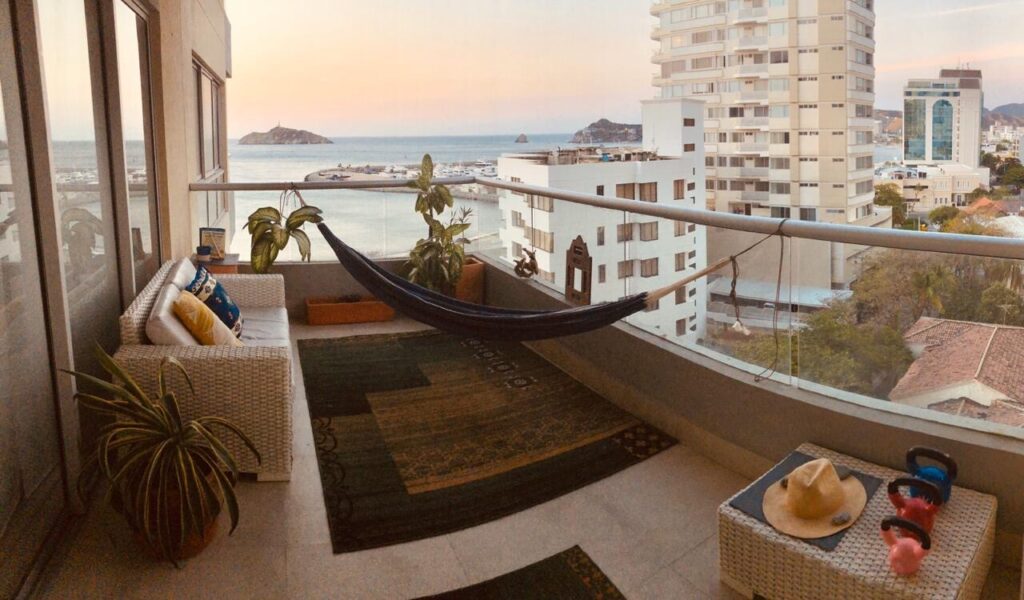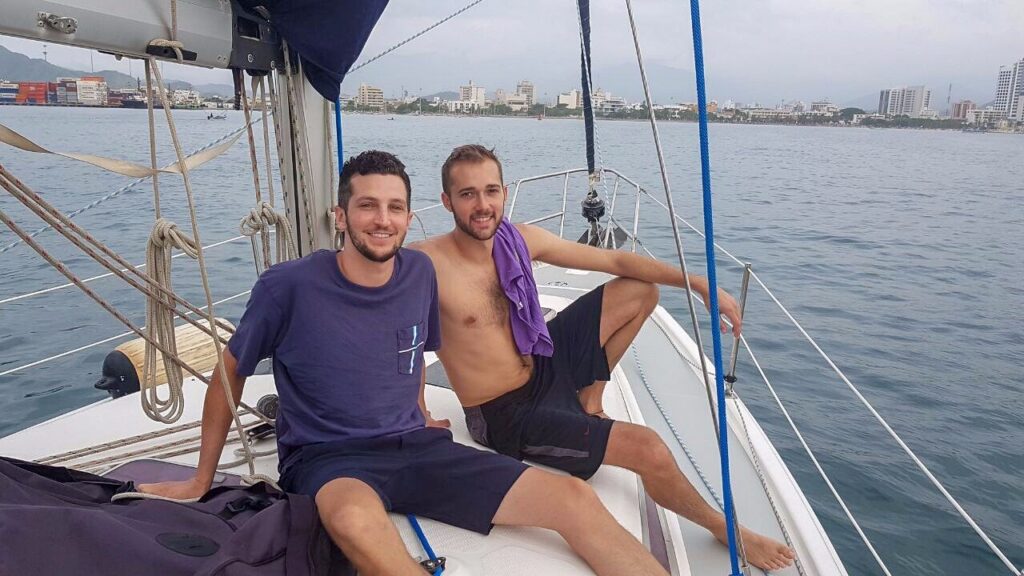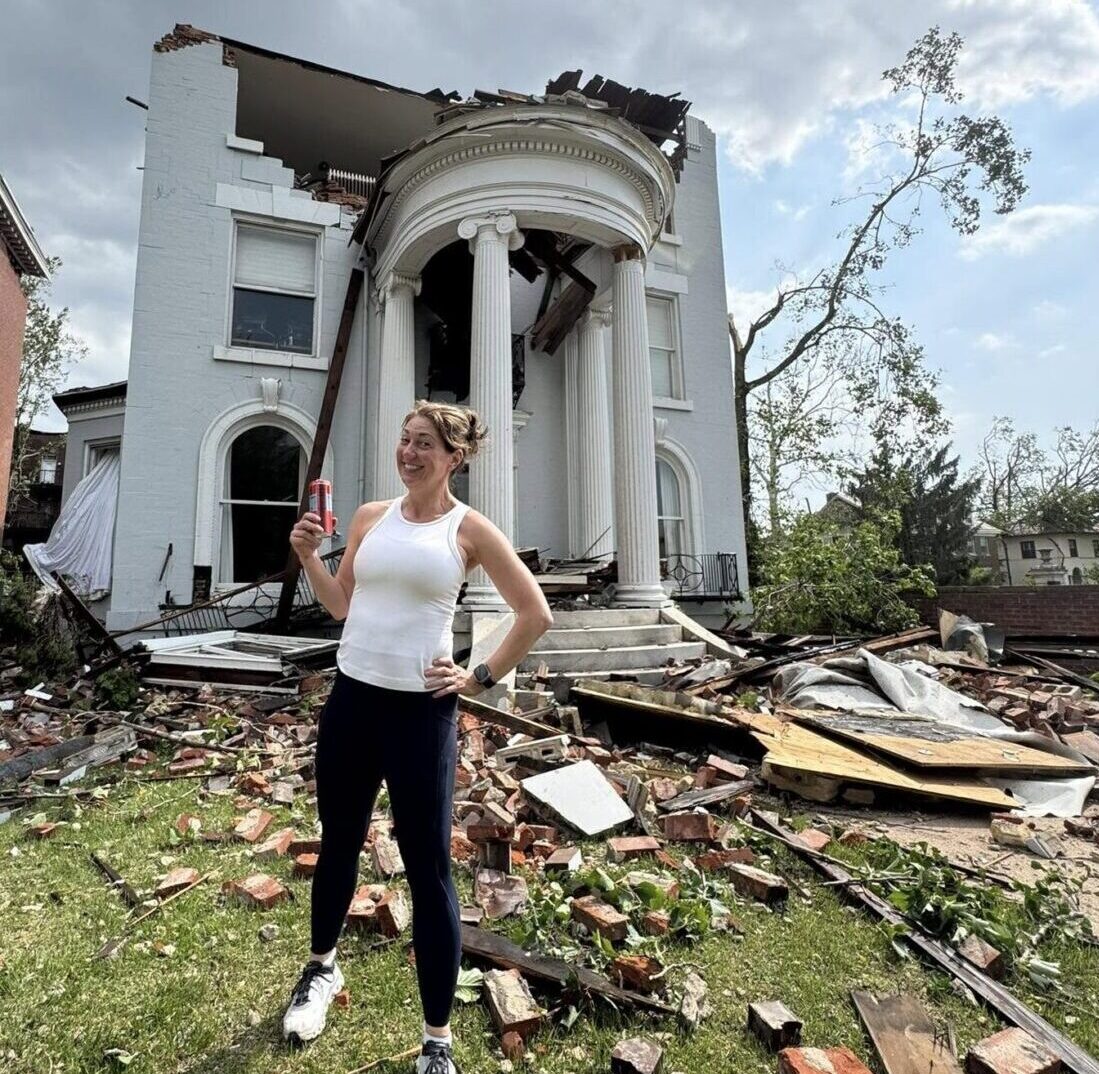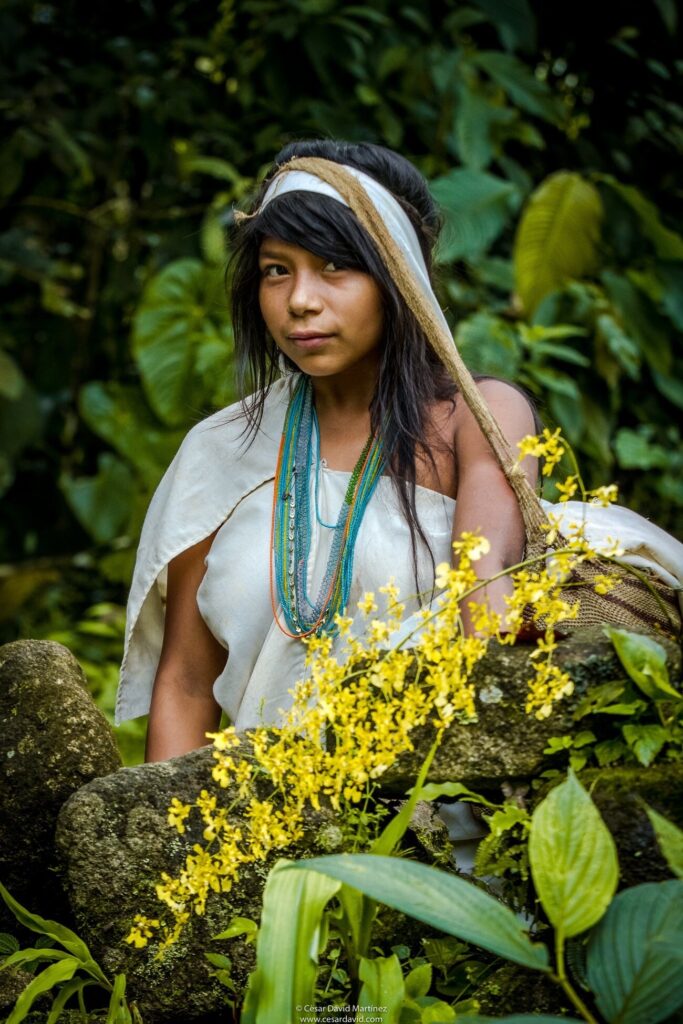
With coronavirus affecting almost every corner of the globe, I thought it would be interesting to check in with Eric Hamblett, who moved from the Central West End to join a new venture in Colombia, South America in 2017. It was an opportunity for me to see what my friend has been up to, find out how the government there is handling the pandemic and, via this post, take you along for the ride.
It doesn’t require much of an imagination to see how Hamblett is handling being quarantined, after he sent a photo (above) of the view of the Caribbean taken from his apartment in Santa Marta, where he’s been on stay-at-home orders since the end of March.

After graduating from Washington University in 2013, Hamblett, above right, and several other graduates including Christopher Holt and SLU grad Max Rava, founded the CWE’s TechArtista Co-working Environment at 4818 Washington Ave.
Four years later, when a respected friend and fellow W.U. grad, Aaron Belkin, above left, asked him to join a hostel business as an owner and oversee a bit of everything from guest experience to staff management and new property development, he jumped at the chance. “I saw this move as an opportunity to gain international management experience and explore a new part of the world.”
It wasn’t a total surprise that Hamblett would choose to leave his St. Louis friends and the co-working space he started to move to a new country. His parents served in the diplomatic corps and over the years they were in Europe he and his siblings lived in 7 different countries. Those experiences “wired him to accept change as a positive force.”
How is the Colombian government handling the coronavirus pandemic?
The government has done a serious job of monitoring the population. People can only leave their homes once a week to do their shopping, otherwise they’re likely to be fined. In the city of Bogota, men and women must alternate days to run errands. I don’t expect the country to be ravaged by the disease if it maintains these strict controls. There are 300 COVID-19 cases in Santa Marta, a total of 12,000 in Colombia, though that’s not entirely accurate as testing is a luxury and many people fear to visit hospitals.
To some uneducated people, it’s a ‘white-man’ virus that was brought into the country, so the locals in some of those communities don’t want any gringos walking around. The communities have closed access to their land and mountains to prevent any tourist or worker from bringing the virus in.
From the photograph it doesn’t look as if working from home while in quarantine could be all bad?
For the time being, I am quarantined with my business partner Jonah, who loves to cook, and there is a grocery store down the street. Luckily we help each other stay focused and productive. Right now I’m working on hotel-related soft projects. The situation could be a lot worse, considering we have a safe building and beautiful ocean views. By far the most exciting event these days is waking up to the flying dolphin shows provided by our local aquarium.
How does what you thought you would be doing when you moved to Colombia match the reality?
On a professional front, the reality is very close to what I imagined. I’ve had many ‘pinch-me’ moments as we’ve worked on our existing properties and the new ones to come. From a personal side, though I moved to Colombia with my partner Aaron, he tragically passed away about a year into our adventure. This left a hole in my heart, but it is a relationship that still makes me smile each day. Belkin’s brother Noah has stepped in and is now a partner in the venture.
Describe the two projects you’re involved in now
Our two operating properties are located in Santa Marta and Palomino, about 1 1/2 hours apart on either side of a famous park named Tayrona National Park, an exotic Caribbean jungle. This area of Colombia is very popular because of its unique ecological conditions. The Caribbean is in front and behind it is a dramatic mountain range that leaps to 18,000 feet.
Of the two properties, Dreamer Santa Marta is a true backpackers hostel and is the most popular choice for foreign travelers. The hostel can accommodate 80 guests in private or shared rooms, and if we’re full, you can rent a hammock.
Dreamer Palomino
The name Dreamer was chosen to capture the essence of a traveler – someone in search of sublime experiences, able to travel the world with a big heart, and an open mind. Dreamer was created by two Italian best-friends who traveled the world and selected Santa Marta as their destiny. I joined the company as it was already underway!
We offer a high quality hospitality experience at Dreamer with bars, restaurants and unique day trips and multi-day experiences at a budget price. “We remember our guests’ names, and these small things have built a strong word-of-mouth reputation and critical presence in publications such as Lonely Planet.”
The NY Times recently published a gorgeous feature on a trek with the hostel as the starting point called The Lost City.

Tayrona National Park
Dreamer Palomino has accommodations for 100 guests. The resort-hostel property has private beach access, a botanical garden with over 60 species of plants, and amenities that are designed to appeal to both couples and families.
What’s on the horizon for you and your partners?
The success of these two properties has led us to acquire land and real-estate for three new expansion projects. We purchased a beautiful, historic house in the heart of Bogota, which will be our first urban project. We also acquired a lot next to Dreamer Palomino, where we are constructing an up-scale hotel with the coast’s largest swimming pool. Finally we took a swing on a remote Colombian island off the coast of Nicaragua named San Andres. This project, whenever it’s complete, will be the granddaddy of them all.
Tell us a little about the indigenous people
At W. U. I studied anthropology and though I’m here with my business-cap on, I’ve become passionate about the local, indigenous culture, who managed to survive extinction over centuries and are the last surviving civilizations from the Inca and Aztec periods. This was all possible because of their connection with nature.
They view themselves as guardians of the natural systems. The stick and gourd, above, are used in a ritual indigenous men perform to connect themselves with their god, mother nature, Aluna. Inside the gourd is a mixture of crushed seashell from coastal beach sites that they apply to their gums, bringing themselves closer to Aluna.
It’s an incredibly refreshing perspective and I recommend this documentary for anybody curious to learn more. (The running time for the video is 1 hour 28 mins.)
What foods have you come to enjoy that are typically Colombian?
Living on the coast, seafood has come to dominate my palette. I frequently eat filete from a fish named Robalo in a traditional coconut sauce and rice, with fried plantains the locals call “patacones.” Colombian cuisine, no matter which area you visit, is rustic. I always love getting out in Bogota to the cosmopolitan restaurants there. It takes me back to St. Louis, though the food in St. Louis is hard to beat.
What do you miss about living in St. Louis?
I miss the mid-western hospitality. There is definitely something about the personalities and friendliness of St. Louisans. I also miss the food and the service. There’s a reason why St. Louis has produced hospitality legends such as Danny Meyer. It comes down to the character of the place.
For more information about Dreamer or Dreamer Palomino, or just to say hello: here is Hamblett’s email address: ehamblett@gmail.com.



Very lovely, captivating and informative article! Love these Dreamers xoxoxo…